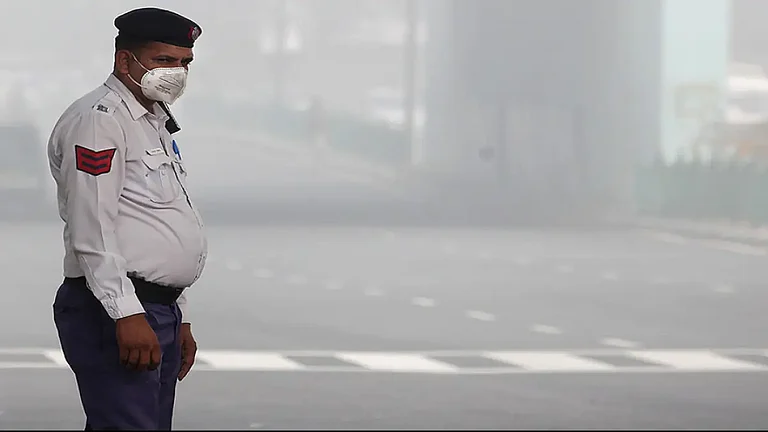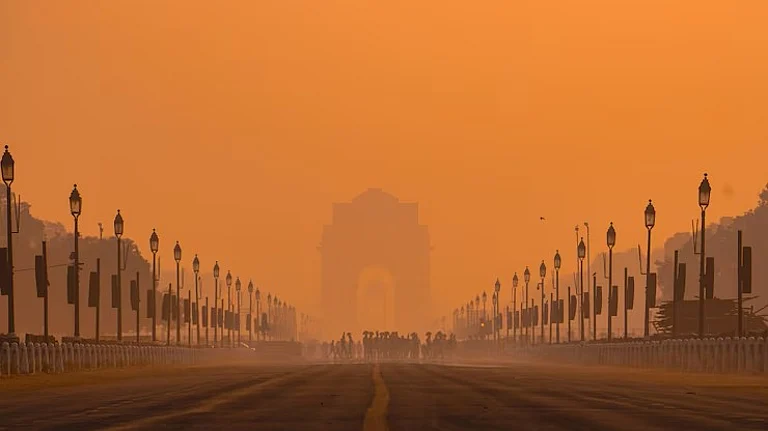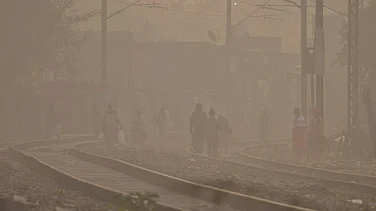Indians are at risk of dying about 3.5 years earlier than they would if the air were clean and met the WHO guideline. Even those in the cleanest regions of the country could live 9.4 months longer if the air quality met global standards, according to The Energy Policy Institute at the University of Chicago's (EPIC) 2025 report, stated PTI.
The report further added that PM2.5 concentrations in India in 2023 were higher than in 2022.
These levels are more than eight times higher than the WHO guideline and reducing them to permanently meet the global standard would add 3.5 years to the average life expectancy of Indians.
According to the WHO's 2021 air quality guideline, the recommended annual average limit for PM2.5 is 5 micrograms per cubic metre, while for PM10 it is 15 micrograms per cubic metre.
These limits are far stricter than India's own standards. India's National Ambient Air Quality Standards (NAAQS), set by the Central Pollution Control Board (CPCB) has allow up to 40 micrograms for PM2.5 and 60 micrograms for PM10.
The report said 46% of India's population lives in areas where annual PM2.5 levels exceed the national standard of 40 micrograms per cubic metre. Meeting this standard could increase the life expectancy of people in these regions by 1.5 years.
In the most polluted region of the country, the Northern Plains, 544.4 million residents or 38.9% of India's population could gain five years of life expectancy on average if particulate concentrations met the WHO guideline.
If all of India were to reduce particulate pollution to the WHO guideline, residents of Delhi, the capital and the most populous city, would see the maximum benefits, gaining 8.2 years of life expectancy.
Outside Delhi and the Northern Plains, Rajasthan, Madhya Pradesh and Maharashtra face the highest health burden from particulate pollution. Reducing it to the WHO guideline could add 3.3, 3.1 and 2.8 years respectively to the average life expectancy in these states.
While outdoor air pollution shortens lives in general, indoor pollution has severe localised effects, particularly for women in rural areas.
Indoor Pollution Hits Rural Women
In addition to the shortening of lives of population in the exteriors or public spaces, air pollution in India also hits women hardest at home. Another study from the Asian Development Research Institute and Mahavir Cancer Sansthan revealed how indoor pollution from biomass cooking fuels in rural Bihar has driven a surge in lung cancer among non-smoking women.
According to TOI, while addressing a meeting of scientists and health experts in Patna on August 22, Mousumi Gupta, Research leader stated, “There seems to be a direct correlation between the intensity of PM 2.5 air pollutants and incidence of lung cancer. The PM 2.5 concentrations were found to be shockingly greater than 1000µg/m3 in the kitchens of rural houses in Bihar, whereas the acceptable WHO standard is 25 µg/m3.”
(With inputs from PTI.)



























